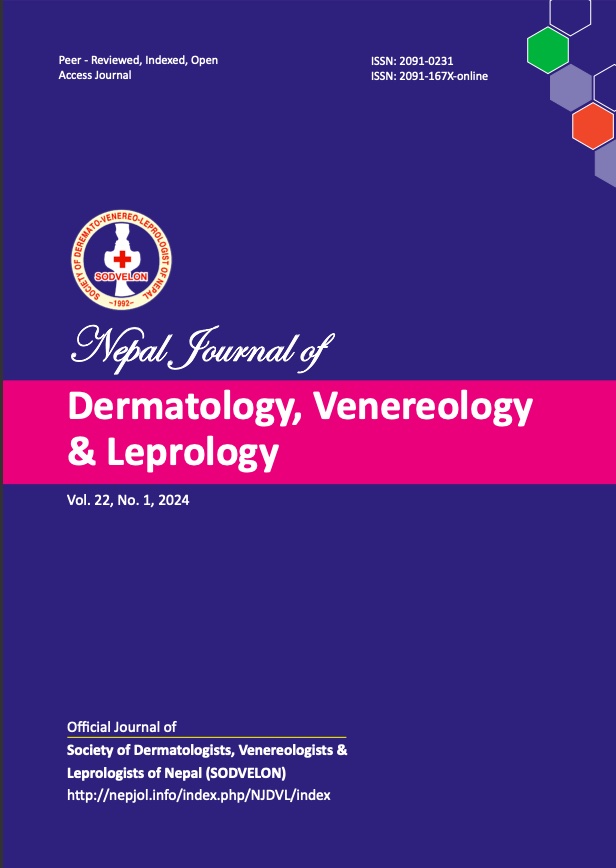Pattern of Inappropriate use of Topical Corticosteroid and Cutaneous Adverse Effects at a Tertiary Level Hospital in Kathmandu
DOI:
https://doi.org/10.3126/njdvl.v22i1.62696Keywords:
Atrophy, Corticosteroids, TineaAbstract
Introduction: Topical corticosteroids are anti-inflammatory, immunosuppressive, and anti-proliferative drugs with profound efficacy. As it provides rapid relief, it is used for a wide spectrum of dermatological conditions. Rampant use of topical corticosteroids due to their easy availability gives rise to difficult-to-treat cutaneous adverse effects.
Objectives: To determine the pattern of inappropriate use of topical corticosteroids and cutaneous adverse effects
Materials and Methods: This was a hospital based cross-sectional prospective study conducted among 84 participants in the Department of Dermatology, Tribhuvan University Teaching Hospital, Kathmandu, from October 2020 to September 2021. Ethical clearance was obtained from the Institutional Review Committee. The participants fulfilling the inclusion criteria were included in the study.
Results: Out of 84 cases, 59.5% were females and 40.5% were males. The mean age of participants was 30.4±9.1years. Dermatophytoses (71.4%) were the most common cause of inappropriate use of topical corticosteroids. The most common adverse effect was tinea incognito (23.8%). The most potent class (60%) of topical corticosteroids were misused. Most of the participants used topical steroids either for the duration of 1 week to 1 month ( 23.8%) or for more than 12 months (23.8%).
Conclusion: Inappropriate topical corticosteroid use is a common problem due to its easy accessibility, resulting in several difficult-to-treat cutaneous adverse effects. So, awareness-raising activities regarding the proper use of corticosteroids have to be conducted.
Downloads
Downloads
Published
How to Cite
Issue
Section
License
Copyright (c) 2024 Society of Dermatologists, Venereologists and Leprologists of Nepal

This work is licensed under a Creative Commons Attribution 4.0 International License.
Copyright on any research article is transferred in full to Nepal Journal of Dermatology, Venereology & Leprology upon publication. The copyright transfer includes the right to reproduce and distribute the article in any form of reproduction (printing, electronic media or any other form).




